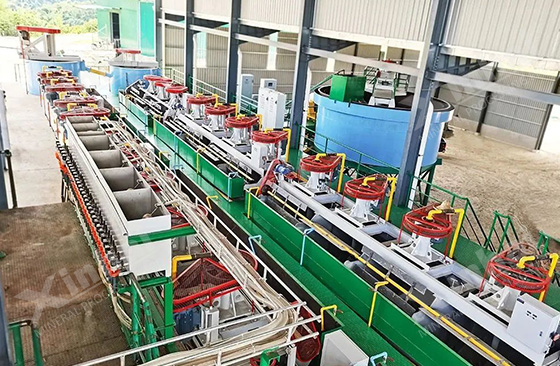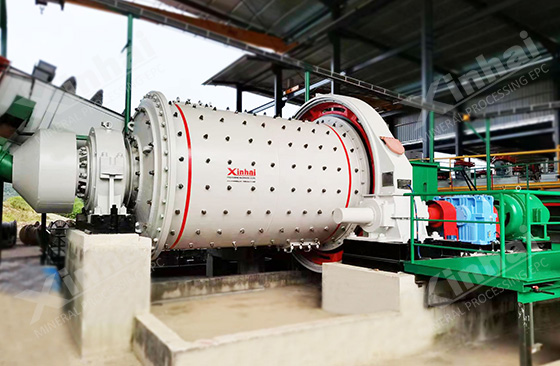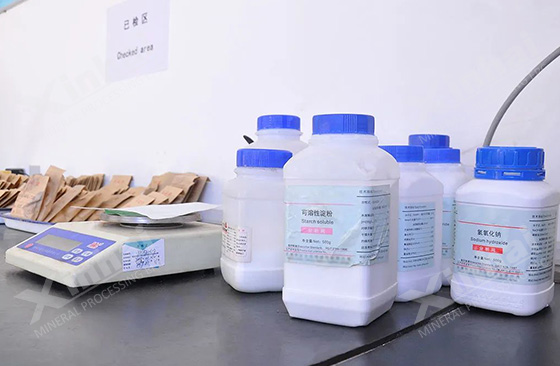Lepidolite lithium ore is an important source of lithium ore. It is mainly produced from pegmatite lithium deposit. Lepidolite ore is a kind of layered aluminosilicate minerals. Its structure is dense and its activity is low. The lepidolite minerals can not react with acid or alkali at the normal temperature so that it is hard to be recycled. The lepidolite lithium ore beneficiation methods include flotation separation, acid extraction, alkali extraction and salt extraction. This article will tell you the details about these lithium ore processing methods.
Use the table of contents below to navigate through the guide:
01Lepidolite lithium ore flotation separation process
Lepidolite ores mostly are embedded by fine-grained particles. Lipidocite minerals are mainly embedded with gangue minerals like quartz and feldspar. Fine-grained lepidolite lithium ore are recycled by flotation separation process. During the flotation processing, the agents system is very important. Under the acid condition, amine collector is applied for ore flotation processing. When the pulp is alkaline, the fatty acids collectors will be used for floating the lithium ore. What's more, anion and cation combined collectors utilize the synergistic effect of agents to improve the concentrates grades and recovery rate significantly.

02Lepidolite lithium ore acid extraction process
It is common to apply the acid extraction process for recycling the lithium ore. Its principle is that hydrogen ions diffuse from the solution to the orthosilicate film layer of lepidolite, which decomposes lepidolite into soluble sulfate. According to different processing methods, it can be divided into acid roasting method, Concentrated sulfuric acid pretreatment at the normal temperature and mixed acids processing method.
It can also be divided into sulfuric acid method and HF acid method based on different kinds of acids. Sulfuric acid method is to acidify and roast lepidolite and concentrated sulfuric acid at a suitable temperature. The acidified mature materials will be leached in water to get lithium sulfate solution. After acidification, the associated valence metals rubidium and cesium all become soluble salts. The process of HF acid processing is similar to that of sulfuric acid. The low leaching temperature, short leaching time and low energy consumption is conducive to impurity removal at the subsequent processes. At the basis, combined acid of HF acid and sulfuric acid can be used to get higher leaching rate and reduce the energy consumption cost.

03Lepidolite lithium ore alkaline extraction process
Lepidolite ore alkaline processing is limestone roasting method. Its basic principle is to use alkaline to dissolute the SiO2 in the solution. In alkali or gypsum, heating transforms the silicate into soluble lithium aluminate. The reaction of minerals with a mixture of limestone or hydroxide yields lithium hydroxide or lithium carbonate.
Lepidolite concentrate is mixed with limestone in some proportion and then entered into ball mill machine for grinding. After mixing, bake the mature material at 800~900℃ at high temperature. The mature material is then subjected to water quenching, fine grinding, leaching, filtration or centrifugation and separation to obtain the leaching solution and residue. The concentration of lithium in the immersion solution is low, and the evaporation amount of the concentration and lithium recovery is large. High energy consumption and valuable metal elements in the ore after the leach with the lithium into the immersion liquid.
04Lepidolite lithium ore salt extraction process
The sulphate roasting method is the most widely used method of lithium extraction. The structure of lepidolite will be loose after high-temperature roasting. The ions are exchanged, the metal ion in the added substance occupies the structural position of the original lithium ion, so that it is separated from the insoluble aluminosilicate to form a soluble sulfate. It can be divided into sulfate roasting method, chlorination roasting, sulfide roasting, etc.
1. Sulfate roasting method
The sulfate roasting method exchanges the cations in the sulfate with lithium ions, the lithium ions are replaced, and the lithium sulfate solution is obtained by leaching. The sulfate method has less impurity content, higher leaching rate, better comprehensive metal recovery effect and simple process, and has been widely used in the industrial production of lepidolite lithium extraction. But the sulfate method also needs to be completed after burning at high temperature. Fluorine and waste gas containing sulfides will volatilize during the high-temperature roasting process. Environmental pollution is relatively serious. Minerals tend to stick together during the roasting process, which reduces the roasting efficiency, and lithium products are easily contaminated by potassium.

2. Chlorination roasting method
The chlorination roasting method is to convert lithium and other valuable metals in lepidolite into soluble chlorides, and obtain a lithium-containing solution after leaching to realize the extraction of lithium and alkali metals. The chlorination roasting method can effectively shorten the time, produce less amount of silicon-aluminum slag and be easy to use. But the gasification of chloride will pollute the environment. The use of chlorine has higher operational risks and higher requirements for equipment anti-corrosion, resulting in increased production costs.
3. Sulphide roasting method
Sulphide roasting is the use of sulfides (such as Na2S and FeS) to extract lithium effectively by roasting or grinding and leaching with water. The iron sulfide reagent used in the process is cheap, has a low baking temperature, is environmentally friendly, has low impurity content, and has a relatively high leaching rate. However, in the experiment, the grinding time is long, and the sulfur-containing compounds may volatilize into the atmosphere and cause air pollution.
The above are four methods for extracting lithium from lepidolite lithium ore. In actual production, the recovery of lithium needs to consider many factors. For the production of mineral processing plants, it is very important to understand the composition and properties of minerals. On this basis, it is relatively scientific and reasonable to use mineral processing tests as a process, which can effectively reduce investment loss.


 marketing@ytxinhai.com
marketing@ytxinhai.com  0086 13810327080
0086 13810327080 






































































































 CHAT
CHAT MESSAGE
MESSAGE





